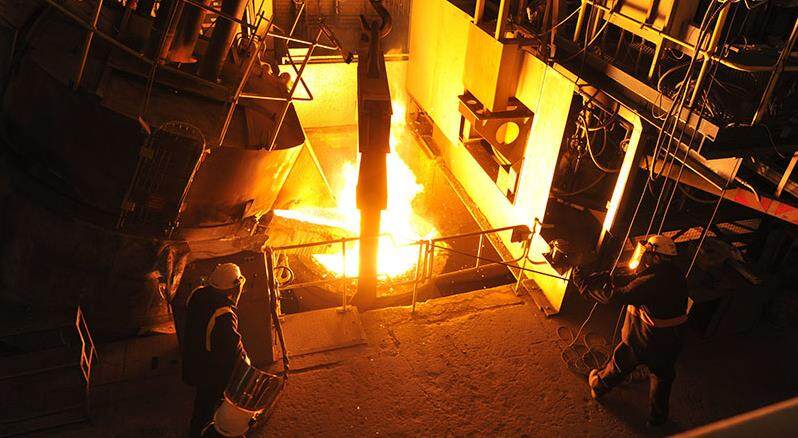Teesside University is working with industry partners on an exciting £270,000 project this summer to demonstrate green steelmaking innovation in the UK.


It will replace coke and other polluting fossil fuels currently powering traditional iron furnaces with hydrogen and electricity to create a low carbon steel industry.
Led by The Materials Processing Institute, the project – codenamed H2DRI – will focus on how the process can be scaled up and will build practical and scientific understanding on how best to deliver economically and environmentally sustainable green steelmaking.
Part of the government’s Net Zero Innovation Portfolio Industrial Fuel Switching Competition that funds low carbon technologies and systems, the project is led by the Institute in partnership with Teesside University, electrical technology developers C-Tech Innovation, the Steel and Metals Institute at Swansea University, and global metals and mining company Rio Tinto.
In addition, they will collaborate with a larger industrial interest group made up of ironmakers, steelmakers and supply chain businesses, including energy developers.
The initial part of the project will involve a feasibility study before the development of permanent and accessible national pilot production facilities.
Chris McDonald, Chief Executive of the Teesside-based Materials Processing Institute, said: “The continued reliance on fossil fuels, particularly coal, for much of the worlds’ fresh steel is one of the biggest challenges to decarbonisation. With demand outstripping the availability of steel to recycle, it is critical we transition quickly towards greener methods of production.
“I’m proud that the Institute, as a national research and innovation centre for the foundation industries, has been selected to lead this groundbreaking project that could potentially revive the UK steel industry.”
Mark Allan, the Institute’s Group Manager for Industrial Decarbonisation, added: “While the principle of using green hydrogen in steelmaking is already proven, the UK is in the starting blocks in the race to produce green steel or to play a meaningful part in global innovation in this area. This project lets us work together to get the best technologies to commercial scale quicker and make a meaningful contribution in the fight against climate change.”
“WE ARE DELIGHTED TO BE ABLE TO USE OUR EXPERTISE IN THIS AREA TO HELP AN INDUSTRY LIKE STEELMAKING, WHICH HAS SUCH A RICH AND VARIED HISTORY HERE ON TEESSIDE, TRANSITION TO A GREENER AND MORE SUSTAINABLE MEANS OF PRODUCTION.“
-Dr Venkatesan Krishnan, Senior Lecturer in Chemical Engineering
Dr Venkatesan Krishnan, Senior Lecturer in Chemical Engineering and team member of the Tees Valley Hydrogen Innovation Project at Teesside University, said: “Forging a smarter, greener industrial economy is a key feature of Teesside University’s research strategy. The University is already involved in key projects in the area of hydrogen production, hydrogen storage and hydrogen as a tool for decarbonizing the local industry.
“Therefore, we are delighted to be able to use our expertise in this area to help an industry like steelmaking, which has such a rich and varied history here on Teesside, transition to a greener and more sustainable means of production.”
Rob Bell, Technical Director at C-Tech Innovation ltd, added: “These are important steps in the route to decarbonisation of our foundation industries. C-Tech Innovation is addressing the needs of other industries by scaling-up continuous, electrically heated process technology and we are excited to contribute to this program working with leading experts in the steel industry.”
Professor Dave Worsley of Swansea University College of Engineering said “We’re excited to be working collaboratively with other research centres and industry in the switch to greener steelmaking”
Rio Tinto General Manager Steel Decarbonisation, David Leigh said, “Hydrogen reduction of iron ores offers a promising pathway to transition away from carbon based ironmaking. This project can accelerate the understanding of how different iron ore feeds behave under hydrogen reduction and allow us to optimise their performance for future green iron and steelmaking processes.”






































